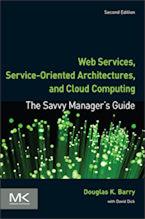Middle-Tier Databases
There are many database options available for middle-tier databases, because they essentially store temporary data. This is in contrast to EIS-tier databases that are often seen as databases of record, which are expected to last "forever." When you are considering a database product for an EIS-tier database, it is reasonable to choose a relational database product from a well-known, established company.
In contrast, middle-tier databases—because they are temporary—open up the possibilities of using technologies that might significantly improve performance and reduce development as well as maintenance costs.
Listed below are the two primary reasons to consider middle-tier persistence, along with reasons why the databases are temporary:
- Persistent cache in the middle tier. The data stored in the middle-tier only is what is needed to support the processing in the middle tier. All the data is eventually written to the EIS-tier database.
- Consolidated data in the middle tier. This data is consolidated only in the middle tier. You can think of it as "publishing" a catalog to the middle tier. Much like a catalog, the data in the middle tier may be there for weeks, months, or even a year - but it is very unlikely to be there for years or decades as in the case of a master database.
The options for middle-tier databases include:
- SQL-92 Relational Databases
- SQL:1999 Object-Relational Databases
- Object-Relational Mapping for SQL-92 or SQL:1999 Databases
- Object-Oriented Databases
- XML Databases
- XML Middleware
Context for Middle-Tier Databases
Author
Douglas K Barry
Principal
You may use this material for your work or classes. Reprint Policy. Be sure to check the menu at the left for other articles available on this site.
The Savvy Manager's Guide
Douglas K Barry is also the author of a book that explains Web Services, service-oriented architecture, and Cloud Computing in an easy-to-understand, non-technical manner.
Web Services, Service-Oriented Architectures, and Cloud Computing: The Savvy Manager's Guide (Second Edition)
by Douglas K Barry with David Dick
This is a guide for the savvy manager who wants to capitalize on the wave of change that is occurring with Web Services, service-oriented architecture, and—more recently—Cloud Computing. The changes wrought by these technologies will require both a basic grasp of the technologies and an effective way to deal with how these changes will affect the people who build and use the systems in our organizations. This book covers both issues. Managers at all levels of all organizations must be aware of both the changes that we are now seeing and ways to deal with issues created by those changes.

